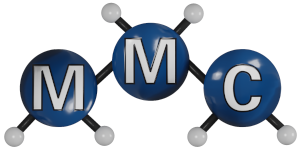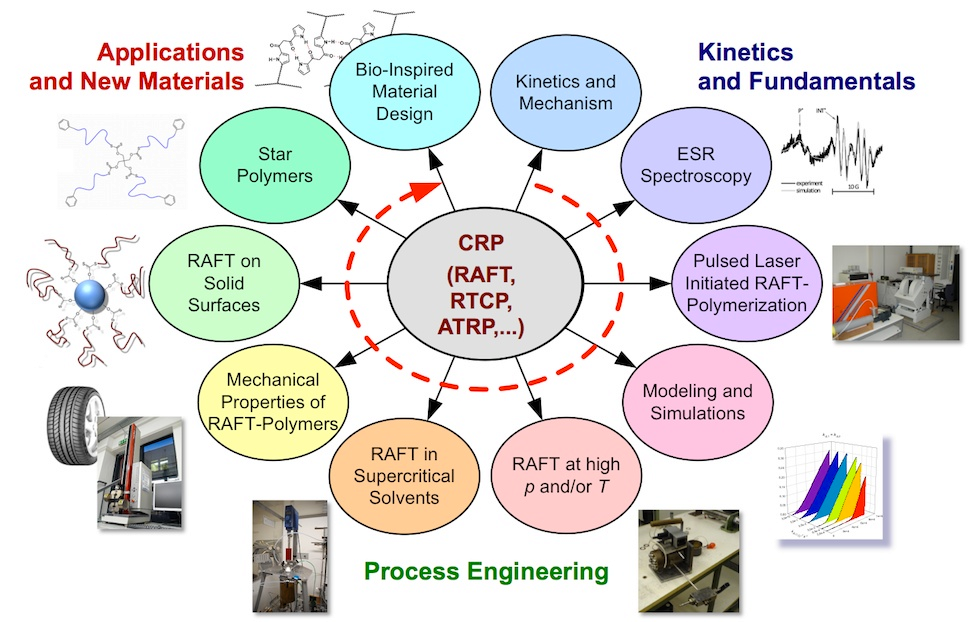Research
Introduction
The ultimate goal in synthetic polymer chemistry is the precise tailoring of macromolecules on a molecular level, which is a major key for controlling the polymer properties. This directed design of polymers has come into reach by the advent of novel polymerization techniques. By using cutting-edge polymerization methods, such as RAFT polymerization, ATRP, RTCP, CCG, and others, the key characteristics of synthetic polymers, that is, chain length, topology, and chemical functionality can precisely be tailored, which opens up a unique pathway to innovative materials. Within this context, our research is directed to high performance bulk materials, to hybrid materials consisting of inorganic and polymeric components, and to polymeric surfaces for nanotronics and biomedical applications. In a bottom-up fashion, novel polymeric materials are designed on the basis of a detailed understanding of the physicochemical underpinnings of the various polymerization methods.
In an attempt to bridge the fields of polymer chemistry, physical chemistry, and materials science, the research activities of the ‘Macromolecular Chemistry’ group target the design of complex macromolecular architectures and polymeric surfaces, the correlation of polymer topology and microstructure with macroscopic material properties, and the fundamental physicochemical understanding of the polymerization reactions. A special focus of the research is on Reversible Addition–Fragmentation chain Transfer (RAFT) polymerization, which we explored extensively during the recent years. We performed fundamental studies into the mechanism and kinetics of RAFT polymerization, we probed the process at various reaction conditions of technical interest in order to pave the way for industrial applications, we developed surface-confined mediating agents for polymerizations from solid supports and we applied RAFT polymerization for obtaining novel macromolecular architectures, to name but a few aspects.


